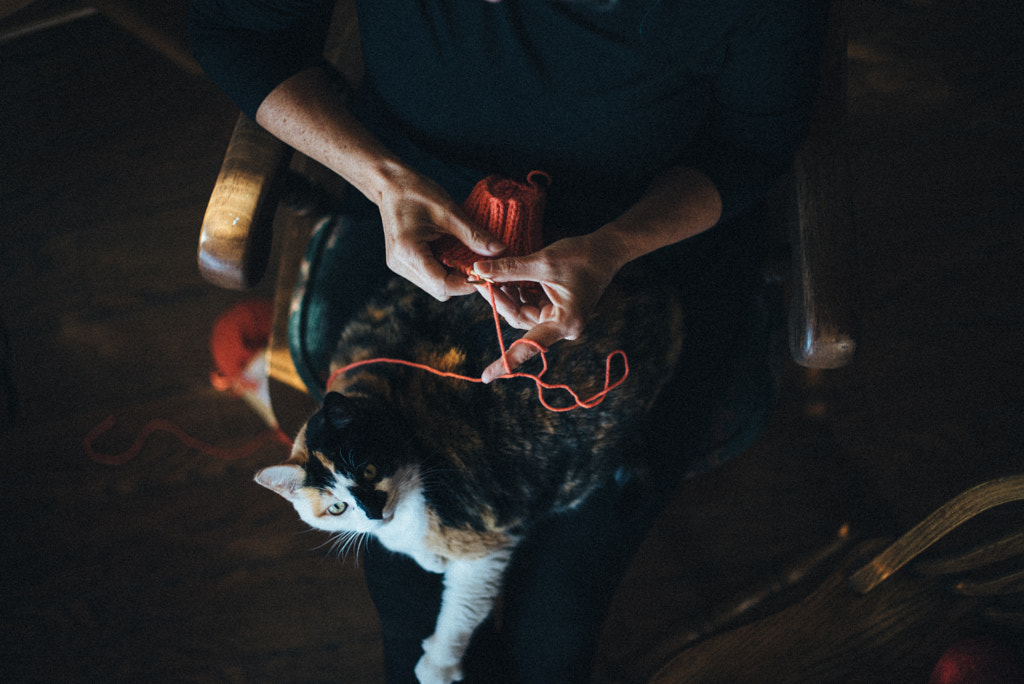According to estimates, we share around 3.2 billion photos online every day. Most of those photos are for personal use, but over the last five-plus years, brands have turned more and more to social media platforms to source creative photography to use in their campaigns.
Many artists choose to share their work for free or for exposure, and that can work, depending on the situation, but others are licensing their photos online for a fee. 500px is one photography community that offers Licensing to its Contributors. Beyond the global exposure opportunities, uploading your photos to 500px gives you the chance to earn passive income through your photography.
Here’s how it works: if your photos are accepted for Licensing, they’re distributed by Getty Images and Visual China Group (VCG), two of the largest visual content providers worldwide. From there, brands can buy a royalty-free license to download and use your photos in their campaigns, websites, and marketing materials, and you get a cut of the fee.
Most photographers already share their images through their favorite apps, but often, they aren’t generating anything beyond likes and comments. Licensing is a great way to get started in commercial photography and monetize your work. Plus, you keep the copyright and ownership over your work. Here are five key things to keep in mind when building your Licensing portfolio.
Contents
Think long-term
There are cases where stock photographers see returns almost immediately after uploading, but these are exceptions to the rule. It can take months to start bringing in a passive income as a stock photographer, so it’s important to have a long-term strategy. Photographers who excel in Licensing are those who continue to improve and try new things.
There are several reasons your photos might not sell right away. The first one could be neglecting your metadata; adding the right keywords to your photos is essential if you want them to show up in customer searches, so it’s not a step to take lightly.
Do your research and look at how top Contributors keyword their photos; you’re likely to find a mix of literal keywords, describing the people, places, and things in the photo, and conceptual keywords, describing the mood or concept.
You might also be submitting photos to a market that’s already saturated or not in high-demand. If your subject has already been covered extensively, it will be harder for your photos to reach the top of those buyer searches, so think about timely, relevant topics that you’re uniquely qualified to cover. It can be the local cuisine in your area or lifestyle photos with your extended family. There’s always going to be a market for authentic, model-released photos of people.
You can always run some searches on 500px to see what other photographers have done before you. Study what top image results have in common, whether it’s keywords or subject matter, and check to see where your photos show up in the results. If they don’t rank as high as you’d like them to, consider giving more thought to your metadata or refining your subject based on current trends.
Upload regularly
A successful Licensing portfolio is one that grows over time, so consistent photoshoots and uploads are key. You can even create a Licensing calendar where you make notations for new concepts you’d like to shoot—like a day at the beach to upload ahead of the summer season or a family gathering to get online before the holiday rush.
If you have a vacation planned, use it to capture some candid travel photos. When the 500px Content Team posts new Licensing Quests, add them to your calendar and see how you can incorporate them into shoots you’ve already planned.
If your photos aren’t selling right away, that doesn’t mean they won’t sell in the future. Instead of deleting your old photos, upload new ones. The more consistently you upload, the better your chances of showing up in customer searches—and seeing a return.
It’s also important to set your expectations about payouts. Although it does happen, “Exclusive Use” licenses worth thousands of dollars are rare. More often, buyers will pay a lower fee to be able to use an image non-exclusively, maybe around $5 to $50. The good news here is that you can sell the same photo an infinite number of times to different buyers.
Some stock photographers swear by the “80/20 rule,” which posits that 80% of their passive income comes from 20% of their photos. Since the number of licenses is unlimited, you could earn a good amount of money from your best-selling photos without any additional work—not in a single payday, but over time as more and more people download the images.
Document the everyday
These consistent Licensing photoshoots don’t have to have a big budget (or any budget at all) to be profitable. You can shoot appealing lifestyle photos with your top-notch DSLR or the mobile device in your pocket, and casual activities like brunch with friends or a night in with family can turn into a marketable photoshoot.
With more and more brands focusing on transparency, marketers are looking for relatable, behind-the-scenes moments from your everyday life. On Getty Images, customer searches for “trust” rose by 126% in the last year alone, and the key to building that sense of trust between companies and consumers lies in being open and honest.
These days, commercial photography features real people living their lives, not just hired models and actors playing a part—and luckily, those kinds of photos are accessible to everyone with a smartphone. Today’s stock photographers are professionals and hobbyists; some have been in the business for decades, and others are just embarking on this career.
Adapt to the market
Although there is certainly some overlap, the market for commercial photography is different from, say, the market for fine art gallery prints, so it’s crucial to upload work that brands can use for their campaigns and initiatives.
A commercially viable photo is one you can imagine in many different contexts: a web banner, an Instagram Story, a billboard, a magazine spread, product packaging, etc., so look out for emerging trends dominating the visual marketing sphere.
If your photos aren’t selling—or if they’re rejected for Licensing—it doesn’t mean they aren’t good; it just means that you could spend more time looking at what makes an image commercially appealing. Look at advertisements, book covers, and websites for inspiration.
500px regularly posts “What’s Trending in Licensing” reports, so you can stay informed about what’s selling and why. By understanding what image-buyers want, you can stay ahead of the curve, fill content gaps, and explore new subjects that are in high demand.
Invest your time
We already know that Licensing your work doesn’t require a financial investment; on 500px, it’s free to submit to Licensing, and you don’t need expensive gear or a fancy studio to take photos that sell. It does, however, require a different kind of investment. We recommend taking a proactive approach that involves consistent shooting, with Licensing in the back of your mind.
Your Licensing portfolio offers you the opportunity to grow and evolve as an artist, while getting real-time feedback about what works in a commercial setting and what doesn’t. Those who make money at it are those who view it as a long-term investment, and it’s one that doesn’t always pay off overnight. It can take time to start seeing results, but the more time and effort you put into it, the better your chances are of long-term success.
Not on 500px yet? Click here to learn about Licensing with 500px.





